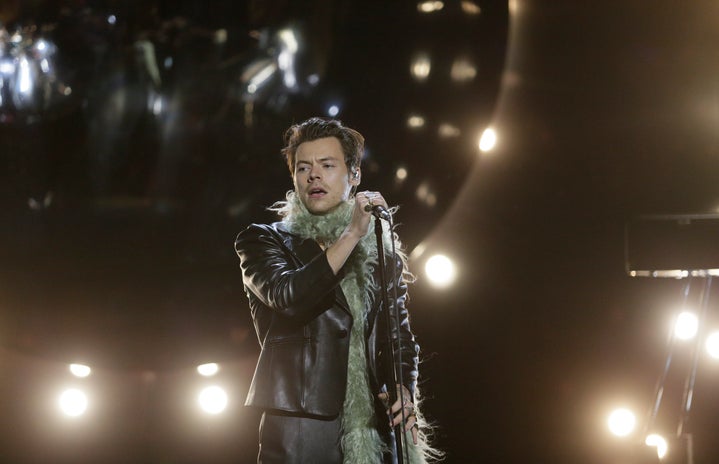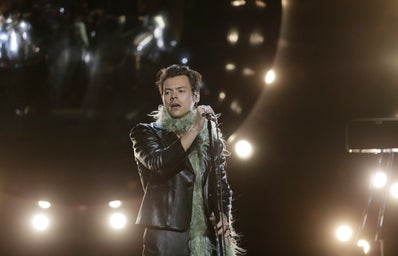According to Merriam-Webster, etiquette is “the conduct or procedure required by good breeding or prescribed by authority to be observed in social or official life.” Meaning that etiquette is the way you carry and portray yourself in your every day and/or social life. A perfect place to employ etiquette is at a concert — a place where hundreds to thousands of people come together with the simple and common factor of loving the same artist. While people usually go to concerts for the same reasons, people have different forms of etiquette or ways they may conduct themselves at certain concerts. I’m here to be your guide in the concert scene, specifically on the correct forms of concert etiquette one must know before attending.
Communication at and during concerts is key, between all parties involved; communication with your friend(s) you come with, the strangers you meet, and even between the artist and their audience. When going with your friends, make sure you are on the same page beforehand. For example, try and go to a concert with someone who is as interested in the artist as you are, or someone who is willing to try and be as interested as you. It will be more fun and overall more enjoyable to attend a concert of an artist you and your friend like, simply because of the relatability factor. When communicating with strangers it’s important to try and keep an open mind. It’s vital that you try to come to a common understanding and compromise because you’ll be around them for at least an hour; it’s better to just try and get along. Ask people questions such as, “Can I put my bag right here?” or, “Do you mind if I do …” It’s better to clarify and speak up. If you’re uncomfortable with something a person close to you is doing, tell them if necessary. However, don’t start unnecessary problems just because you’re slightly bothered by a person’s way of doing something. Lastly, an artist must keep their eyes and ears open. Whether they are a dancer, vocalist, or instrumentalist, they are, in a way, responsible for the people coming and enjoying their show. Although it’s not solely on the artist if someone in the audience gets hurt or faints, their job as a performer is to cater to the audience. Without the audience, the artist wouldn’t be here, so they have loyalty when it comes to their fans, and they do have to be held to a certain standard of communication when it comes to the relationship between them and their supporters.
There is a time and place for everything. Some things are not meant for concerts. You can drink and have fun, but be able to handle your liquor and substances because no one likes a person who’s loud and obnoxiously rude throughout the concert. If you are messy, keep your drinks and food contained, so they don’t spill on others around you. Even though smoking can be prohibited, people still may do it. Try not to blow your smoke directly into those around you and in their personal areas. If they aren’t smoking or drinking, they probably don’t want your smoke or drinks in their vicinity. Although the point of going to a show is to genuinely enjoy yourself, including singing, laughing, and dancing, don’t intrude on people’s space. Read your surroundings, peers, and your environment for instruction and leeway when it comes to physicality. If you feel comfortable and a stranger offers their hand to you as an invitation to dance with them, take it if it’s something you are interested in. Having fun doesn’t have limitations as long as you’re respectful.
One of the most fun and demanding aspects of going to a concert is being in the pit. The pit is general admission and usually a completely standing portion of the audience in a venue that is usually facing the front, closest to the stage, and is the most packed, intimate, and vibrant portion of a concert due to how many people are in close proximity to each other and the performer they paid to see. When you’re in the pit, depending on the artist, mind your personal space. Depending on the genre, fanbase, and artist, the pit environment may be different. For example, I saw Harry Styles during his 2021 Love on Tour, where he had a circular 360-degree stage with the pit split in two. His pit was very interactive, with people doing dances together in the back, people in conga lines, and even people doing jump rope to celebrate Harry Styles’ artistry. His relationship between him and his fanbase is very strong and he is well aware of how personal his shows are. His fans in the pit have created their own energy where they are physically and emotionally connected with each other throughout the entire show.
On the other hand, when I saw Kevin Abstract in October, the show had a completely different vibe. Firstly, his concert was a secret show in Brooklyn at a small capacity venue, and Harry’s show was in a ten thousand-person maximum capacity in a large arena in Connecticut. Abstract’s past career and preferred genres also contribute to the differences in pit culture at his shows. Kevin Abstract went from the acclaimed band Brockhampton where they made rap, R&B, and even at times, music with hints of pop, to his solo career, where he did the same; his fans had similar concert etiquette for his solo shows as they did for Brockhampton. A prime example of a different pit culture includes mosh pits. According to the Cambridge Dictionary, mosh pits are “the area in front of the stage at a rock concert where members of the audience dance energetically and violently.” At the Kevin Abstract concert, mosh pits were constantly in motion and included almost the entirety of the people in the venue. The physical aspects of this concert compared to a Harry Styles concert are drastically different, yet still personal to the audience. While Harry Styles fans are doing the “boot scoot” dance in the back of the pit, Kevin Abstract fans are forming large and energetic mosh pits in the center. The physicality of a show depends on a number of things, specifically the artist, genre, and fans.
There is no real secret or hack to concert etiquette; it’s honestly just being respectful and aware. It’s communicating with those around you, being aware of yours and others’ personal space, and respecting both your peers and the artist’s boundaries. Communication goes multiple ways between other people at the concert, the artist, and you. No one wants people pushing them and shoving them at a soft indie concert. Read the energy and know the crowd you’re a part of. Hold on to your food, drinks, and other belongings because some people may not want liquor spilled on their shoes or smoke blown into their faces. Lastly, respect is one of the most important, if not the most important part of attending a concert. When an artist is singing a meaningful and personal song, it’s not okay to shout out inappropriate things about them or their personal life. It’s not okay to throw things at artists as if they aren’t normal people. Artists aren’t just objects of people’s desire, they are people with talents that they want to share with their supporters. Going to a concert is an exchange between their fans and the artist – the artist gets to see the joy people receive from their art and their fans get to see their favorite music and performer live.


